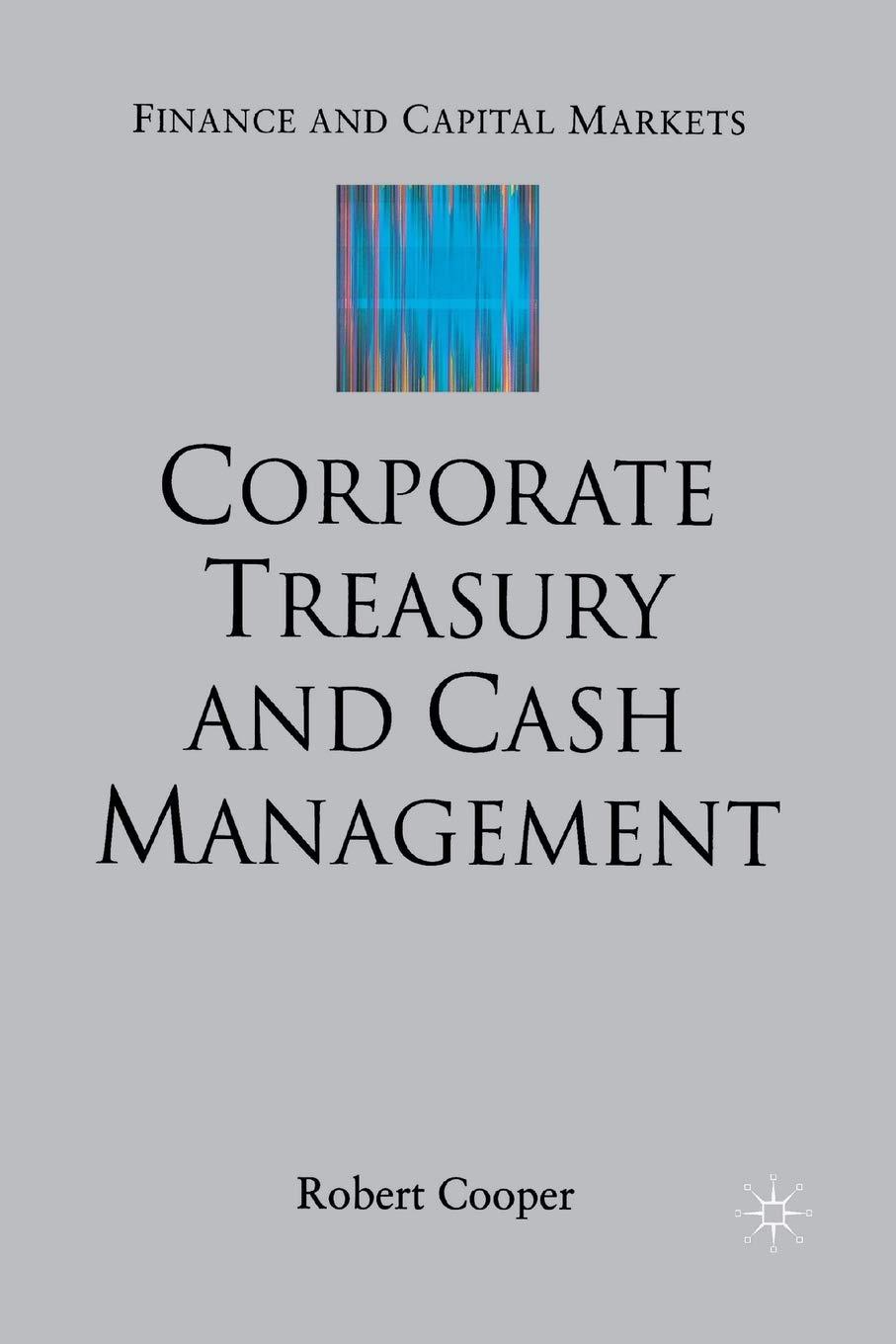Question
Suppose that financial markets consist of 2 risky assets and one risk-less asset. Let Rf=1% and there be four investors each of whom has different

Suppose that financial markets consist of 2 risky assets and one risk-less asset. Let Rf=1% and there be four investors each of whom has different beliefs for the expected returns of the 2 risky assets as follows: ^1= (6% 1%), ^2= (3% 2%), ^3=(2% 3%)and ^4 =(1% 5%). The investors all have the same degree of risk aversion in the mean-variance preferences, p^1= p^2 = p^3 = p^4 = 2, and their wealth levels to be invested are all the same as well w^1= @^2= w^3 = w^4 = 10. The variance-covariance matrix and the true expected returns of the risky assets are given by
COV (2% 0%
0% 2%)
And = (2% 2%)
e) Calculate the average alpha of the investors, based on the proportion of their wealth they
invest into assets 1 and 2.
f) Calculate the true utility of the investors corresponding to their optimal (active) portfolios,
using the true expected returns.
3.5. Suppose that financial markets consist of 2 risky assets and one risk-less asset. Let R = 1% and there be four investors each of whom has different beliefs for the expected returns of the 2 risky assets as follows: ut 6% 1% 3% 2% (2% 3% and je 1% 5% The investors all have the same degree of risk aversion in the mean-variance preferences, pl = p2 = p = p4 = 2, and their wealth levels to be invested are all the same as well wo = w = w;= w; = 10. The variance-covariance matrix and the true expected returns of the risky assets are given by COV = 2% 0% 0% 2% and h = 2% 2% 3.5. Suppose that financial markets consist of 2 risky assets and one risk-less asset. Let R = 1% and there be four investors each of whom has different beliefs for the expected returns of the 2 risky assets as follows: ut 6% 1% 3% 2% (2% 3% and je 1% 5% The investors all have the same degree of risk aversion in the mean-variance preferences, pl = p2 = p = p4 = 2, and their wealth levels to be invested are all the same as well wo = w = w;= w; = 10. The variance-covariance matrix and the true expected returns of the risky assets are given by COV = 2% 0% 0% 2% and h = 2% 2%Step by Step Solution
There are 3 Steps involved in it
Step: 1

Get Instant Access to Expert-Tailored Solutions
See step-by-step solutions with expert insights and AI powered tools for academic success
Step: 2

Step: 3

Ace Your Homework with AI
Get the answers you need in no time with our AI-driven, step-by-step assistance
Get Started


